Here's a great link to such: http://goughlui.com/the-vhs-corner/mini-me-vhs-c-teardown-adapter/
Mini-Me: VHS-C Teardown & Adapter
While the regular VHS tape was a book-sized cartridge holding up to about 5 hours of tape, it had a smaller relative known as VHS-C, where the C stood for compact. This was a small sized VHS cassette intended for use with camcorders and initially came in lengths of 30 minutes, extending to 45 minutes by the time VHS-C was overtaken by (primarily) Video8/Digital8 and miniDV.
VHS-C cassettes contained the same sort of tape inside, and recorded video in the same way as regular VHS, allowing for mechanical adapters to allow VHS-C cassettes to be played in full size VHS decks – an advantage that the other formats at the time did not have.
Thanks to visiting a thrift store, and finding a few VHS-C cassettes which I promptly purchased, I’ve been able to compile this unboxing and teardown of a VHS-C cassette, along with a look at it inside a VHS-C to VHS adapter.
The VHS-C Cassette
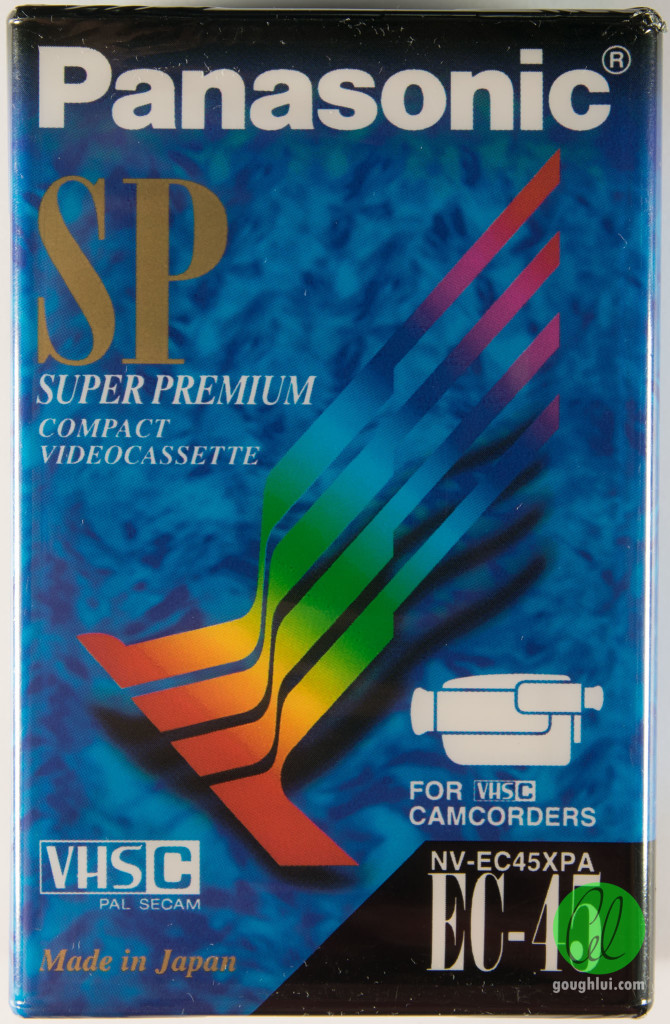
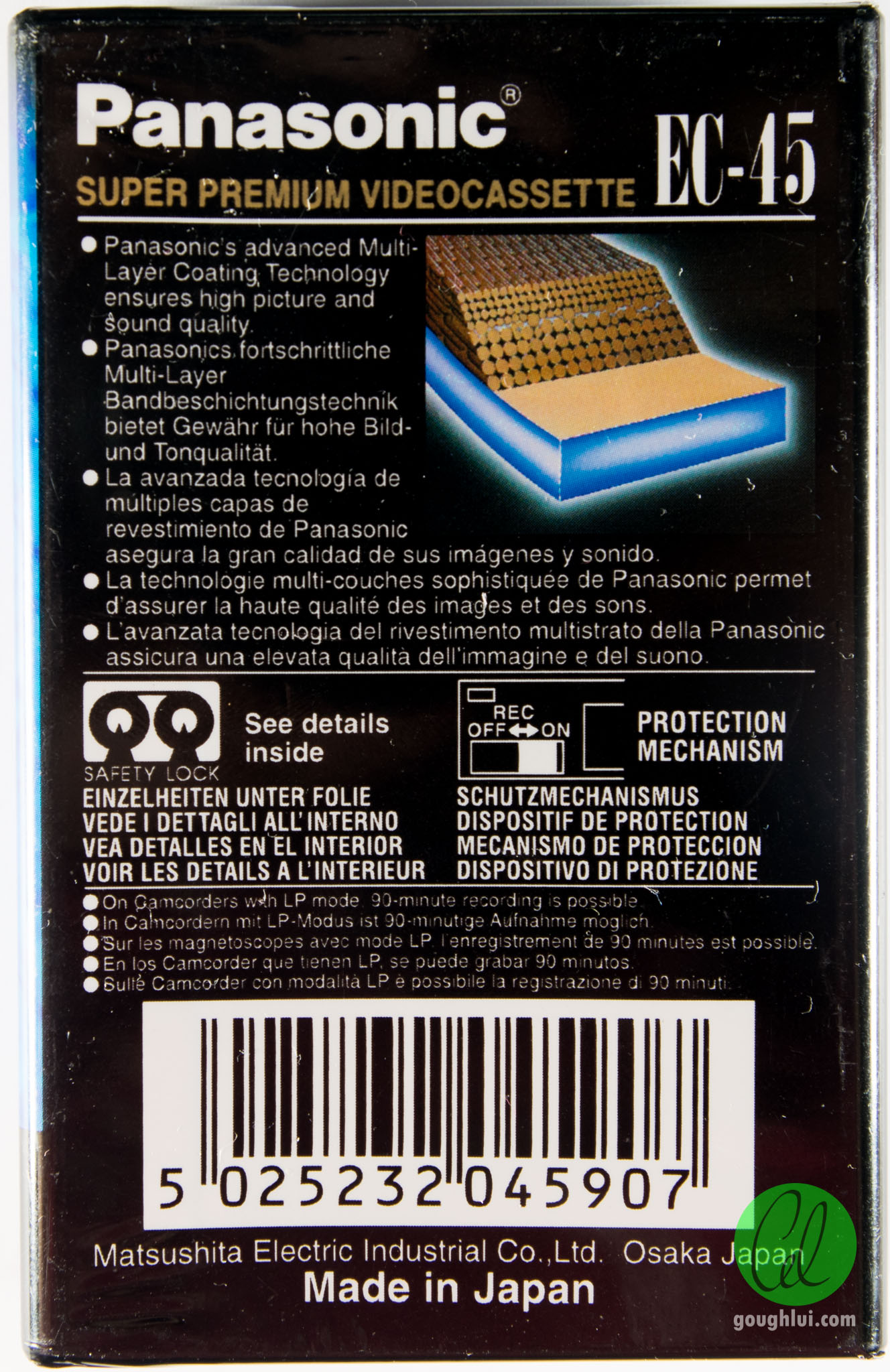
This is a Panasonic SP EC-45 VHS-C cassette, Made in Japan. This particular cassette is a later-model cassette. We know this because the 45-minute (PAL) length was not available in the early days of VHS-C. I still remember the JVC XR 30-minute cassettes that my Dad used to film my childhood, although I have no idea where they are now. The earlier cassettes also featured break-off write-protection tabs similar to the full-size VHS cassettes, with later cassettes featuring slide-switches (similar to floppy disks) instead. This one also had the safety lock anti-slack system, which early cassettes did not have.
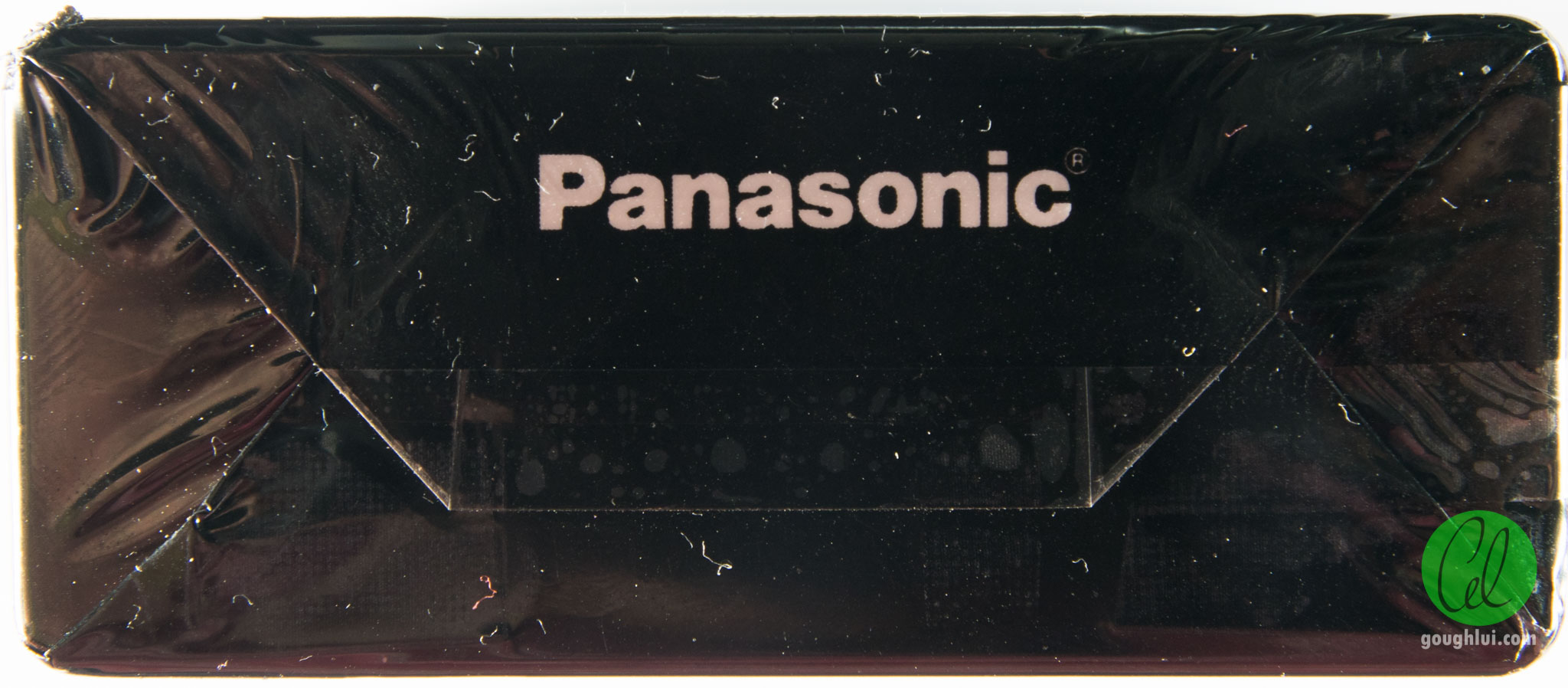


The whole cased cassette is covered by a printed cellophane wrapping, which has an easy open “cut”. After all the transport, there are a few nicks in the corners. I suppose now, it’s time to tear it off and unveil what’s inside.
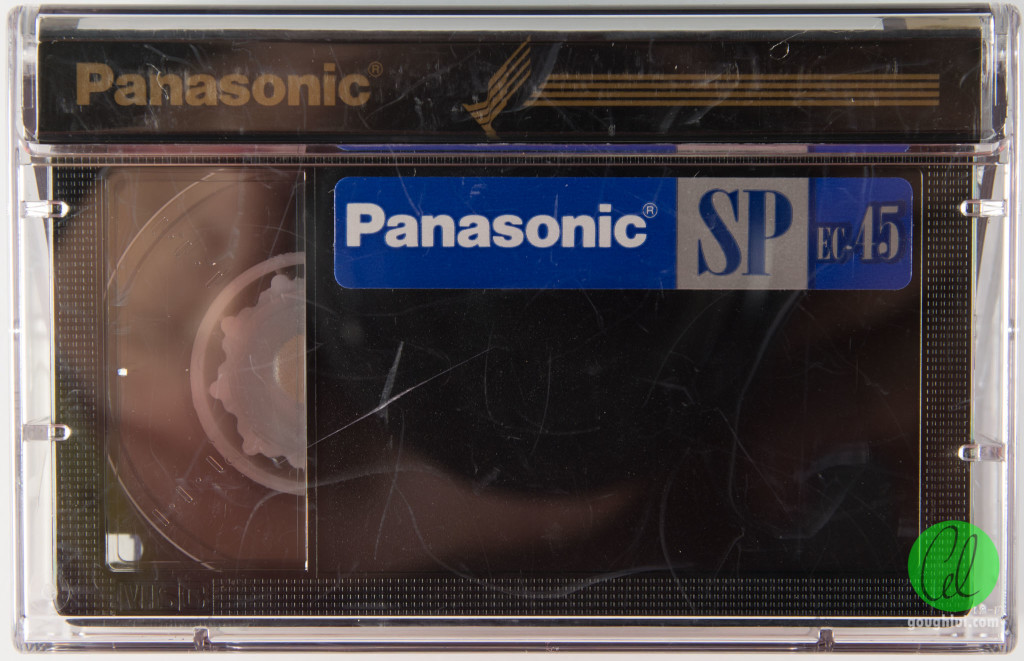
This particular cassette was housed inside a jewel case style plastic hinged case similar to an audio cassette
. This type of plastic loves to crack and shatter when subject to impact – I remember the old JVC XRs came with a flexible plastic case instead.

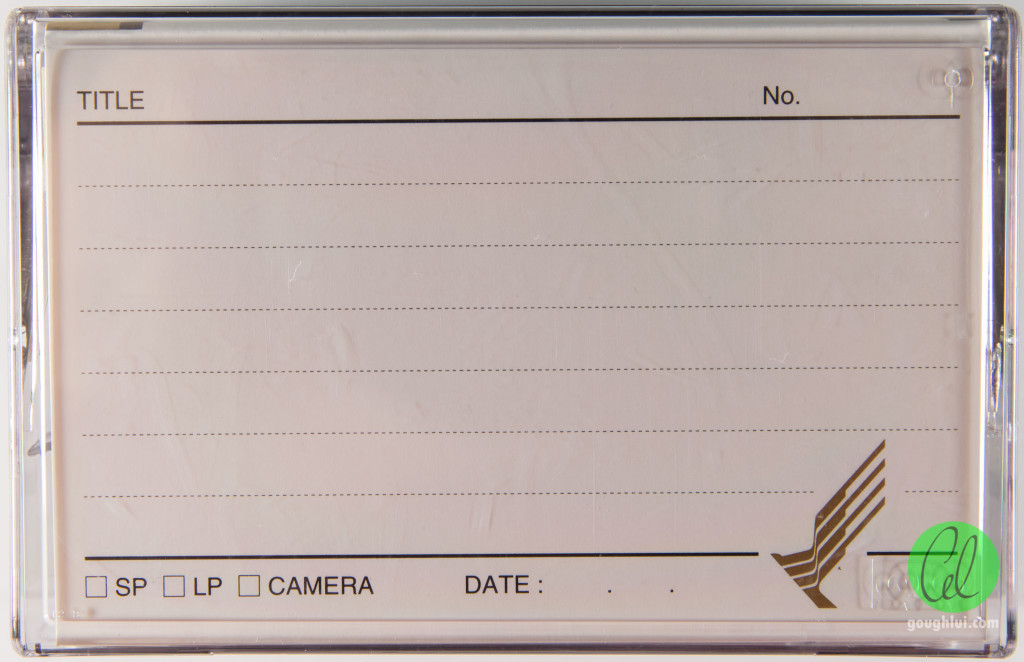
The inside card has spaces for noting down details about the recording, in case you were to store them all in a library. The case itself has the safety-lock logo pressed into it as well.

There are some spines along the edge to keep the cassette nicely aligned in the case.
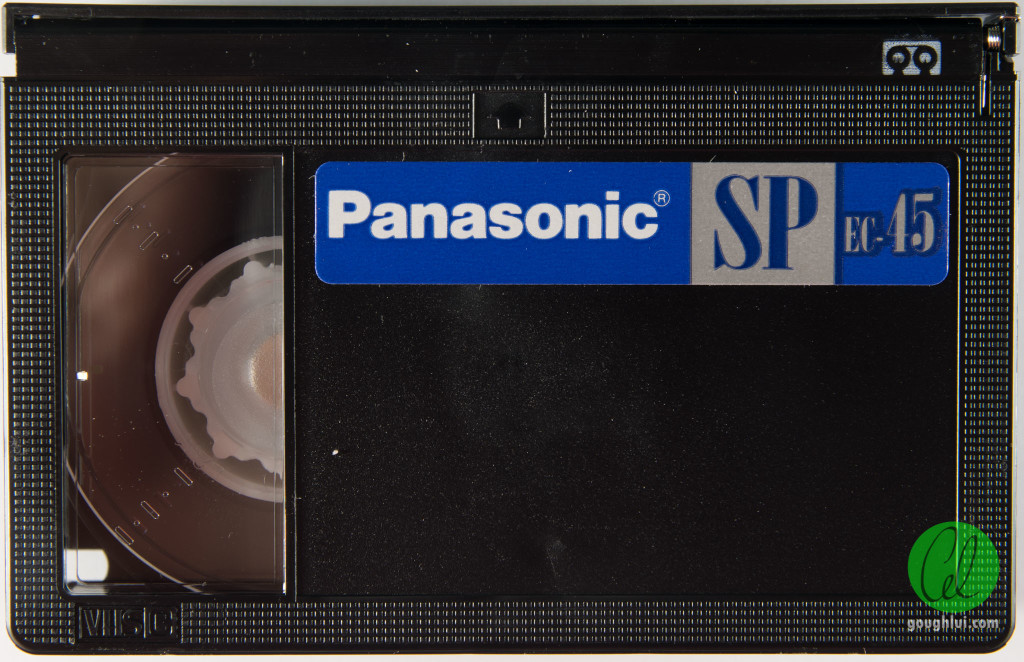
The top of the cassette has part of the labelling area occupied by a branding label from the factory. The more exquisite cassettes often had slightly different layouts at the top, and instead had factory printed brandings on the shell. Again, the safety lock logo is printed on the cassette. The VHS-C logo is embossed in the corner, and the tape-cover flap return spring is visible in the top corner.
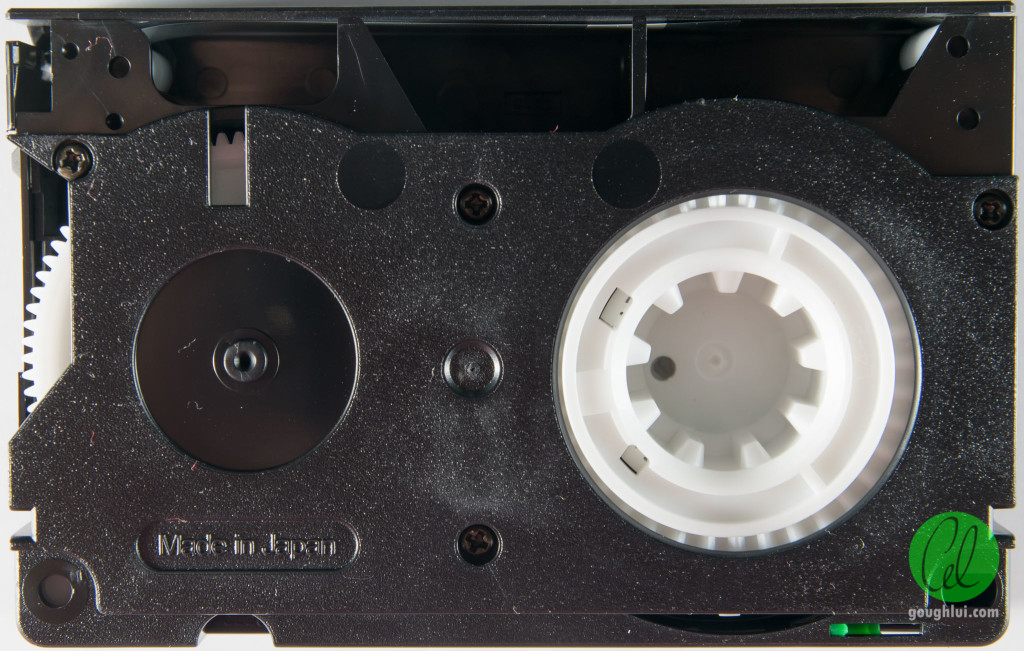
A look at the underside shows the normal arrangement – namely, the supply reel has a hub identical to regular VHS, whereas the take-up reel is driven by a geared wheel.

The spine has the slide switch for write protect and a space for a label to be applied.

The tape-side has a thin flap, not quite the depth of the cassette, covering the tape as a form of protection. It’s not particularly robust, and can be flipped open accidentally even against its “latch”.
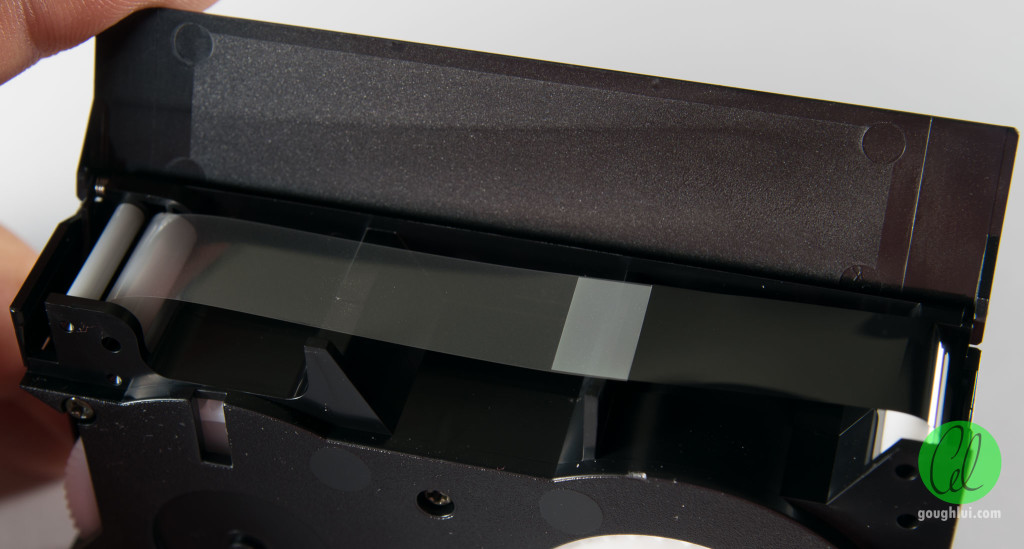
Inside, the flap appears to be patterned to prevent scratching the tape. There’s a leader tape on this too.
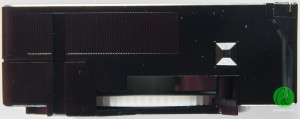
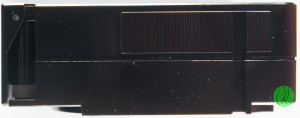
Along the gear-side, a plastic dimple is used to release the flap latch mechanism, so it can be opened normally. Note that the lid doesn’t cover the tape completely, with the tape exposed to the air on both sides.
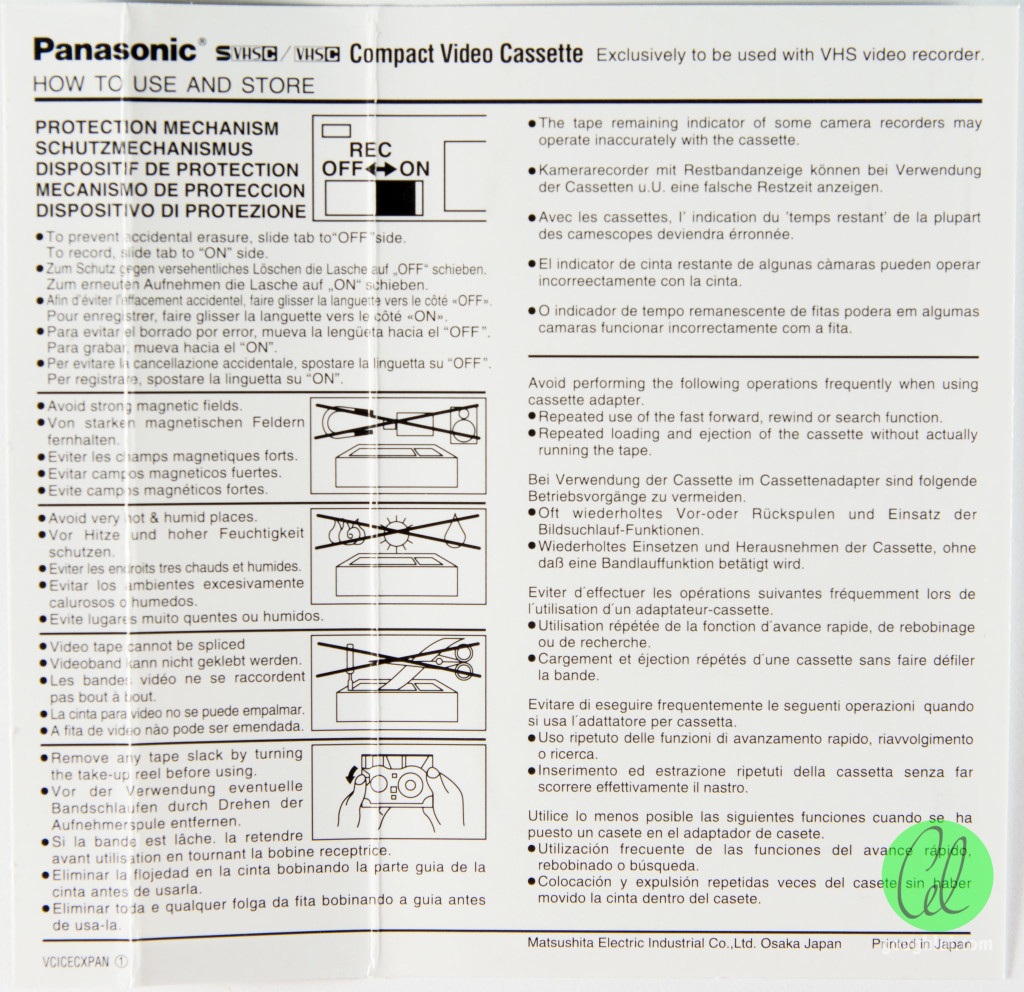
The inside printing of the outer card shows some warnings and care information for the cassette.
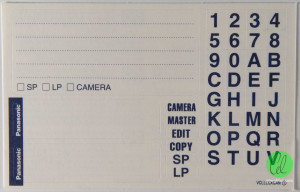
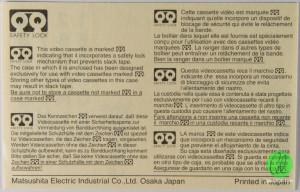
Of course, you also get labels, including those letter and number labels which like to fall off all the time – I wonder if anyone ever used them, as you’d never quite have enough letters.Lets hope it wasn’t William, Xavier or Zach’s birthday …
There’s also a note about the safety lock mechanism – which is basically just a reel lock mechanism. As it turns out, earlier VHS-C cassettes probably didn’t have reel-lock mechanisms, or they were not very reliable, so I can remember the JVC XR cassettes coming with cases that had specific spines designed to engage with the hub and gears to “lock” the tape from movement when placed in the case. Putting those cassettes into this case with no such features is likely to result in tape slack after transport.
Inside the VHS-C Cassette
Now we get to the fun bit – taking it apart. A few screws later, and we can remove the top lid.
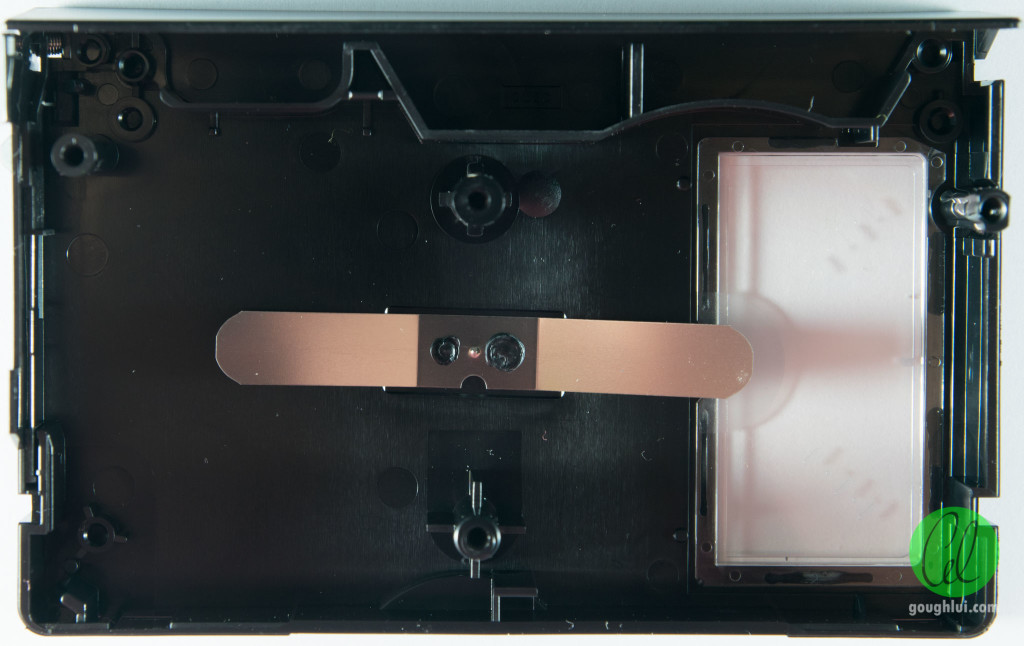
Just like the regular VHS cassette, there is a metal spring at the top which pushes down on both reels.
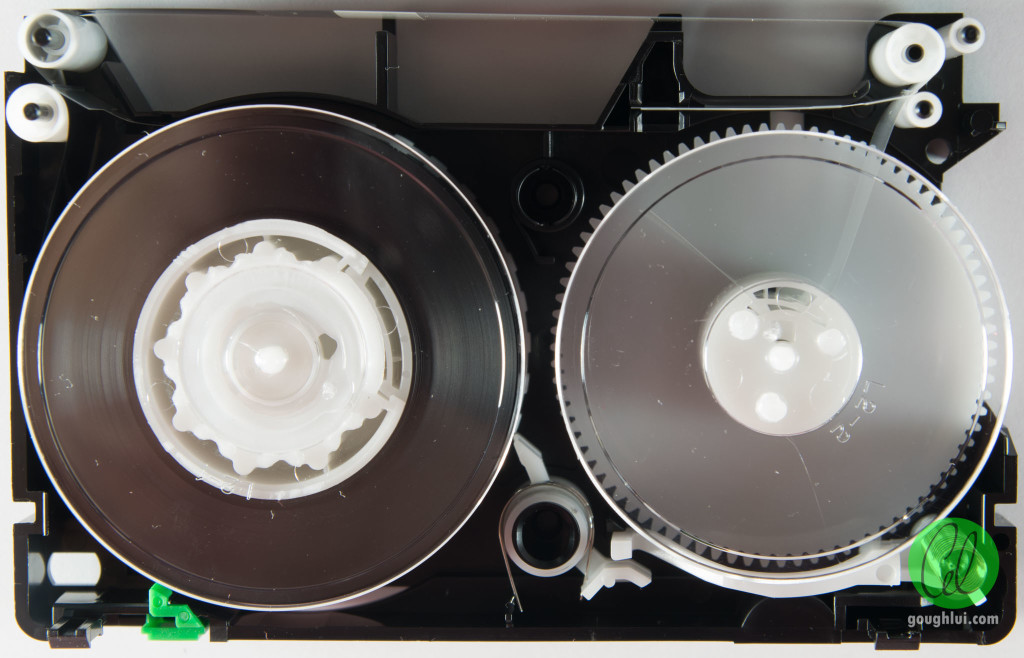
The two hubs are visible, with different inner diameters. The supply reel has a larger inner diameter as it needs to be VHS compatible, whereas the take-up reel has to have a smaller reel so that it can take-up all the tape with sufficient margin around the edge so that the gear drive mechanism doesn’t damage the tape. Both reels use clips to secure the tape – rather curiously, the leader tape on the take-up reel has a fairly long “tail”.

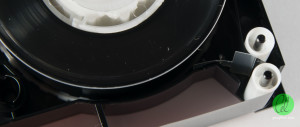
As a precaution on field usage, it seems that both sides of the tape have a “cleaning” wiper that pushes the tape against a roller to seal the reels against excessive dust being taken into the reel.
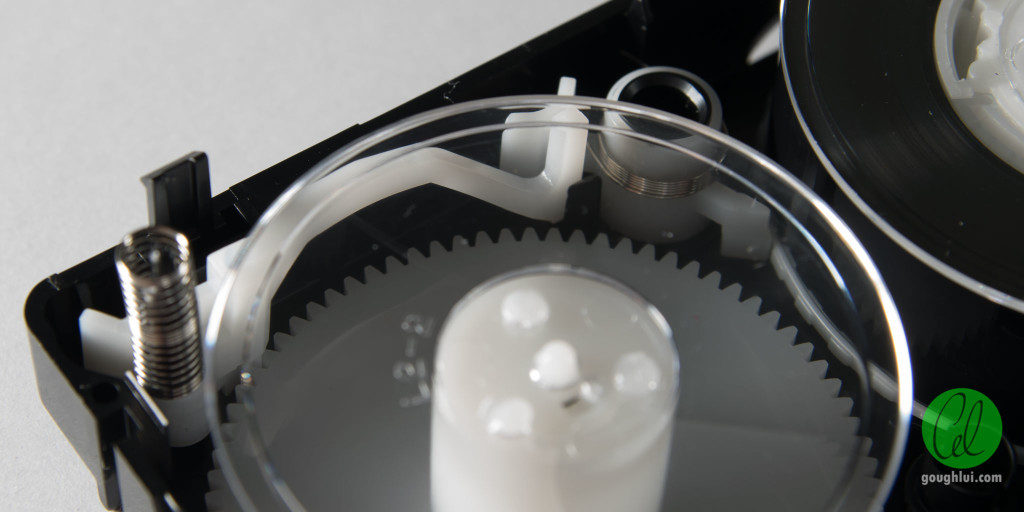
The reel lock mechanism is rather interesting – and it took me a few moments to work out how it functioned. The mechanism is made in two parts – the left lock-bar and spring secures the take-up reel. When a pin pokes through a hole on the bottom of the casing, ittilts this bar upwards, moving its edge out of the way of the toothed edge, unlocking the take-up reel. Simultaneously, it then pushes against a support strut inside the shell, which pushes against the second spring-loaded latch which rotates out of the way of the edge of the supply reel, releasing that reel as well. A rather interesting design.
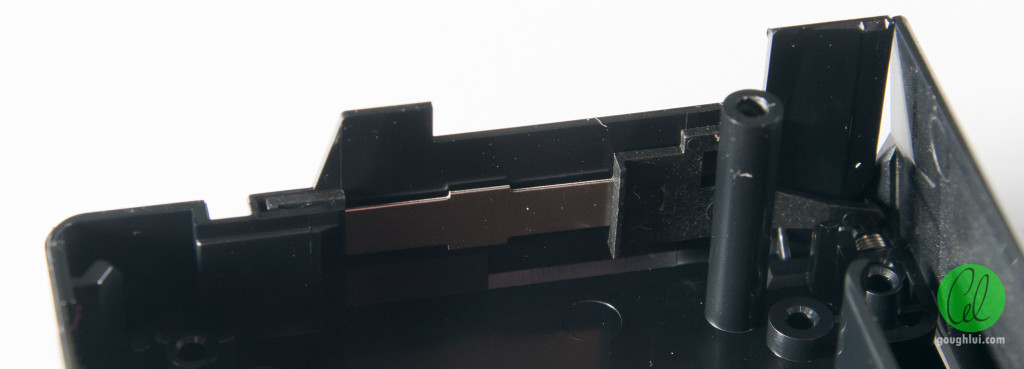
Finally, we have a piece of springy metal at the edge of the shell, which holds the lid-flap in the closed position until the side dimple is depressed. That’s all there is to it.
The VHS-C Adapter
It just so happens I still have my Sharp VR-C2CA VHS-C adapter which I used to digitize my early VHS-C memories. This is a deluxe battery-operated (single AA) motorized unit. When no cassette is loaded, a red triangular tab protrudes from the side to prevent insertion into a VCR. Step 1 is to slide the bottom switch to allow the front door to open. The cassette is slid into the opening, which also releases the flap of the VHS-C cassette.
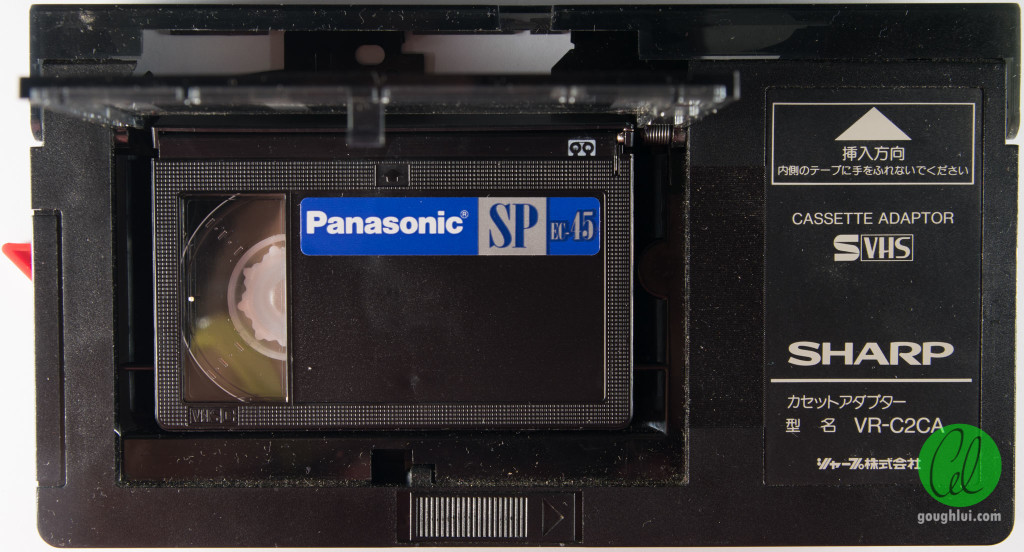
Once it’s in place, we can close the front door, which actuates the motorized system to pull the tape out of the cassette into the VHS standard position. The VHS-C casstte lid covers the gaping “hole” in the adapter when no cassette is loaded.
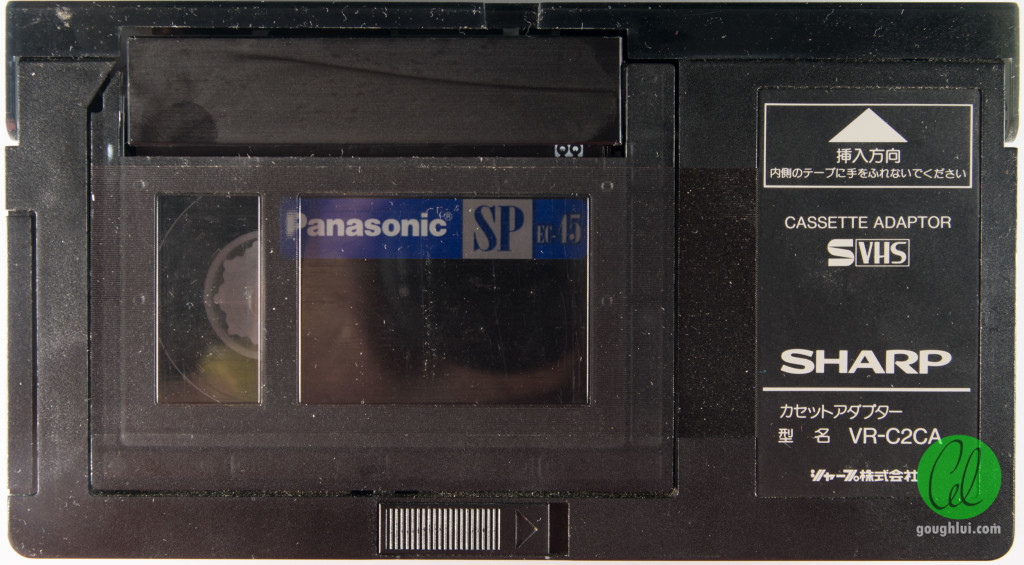
After a few seconds, the motor sounds stop, and it’s ready to be loaded and used just like a regular VHS cassette.

It’s a little heavier than the average VHS cassette, but it’s also a little more hollow as most of the inside is empty space so that the moveable rollers can pull the tape from the VHS-C shell to the full VHS size.
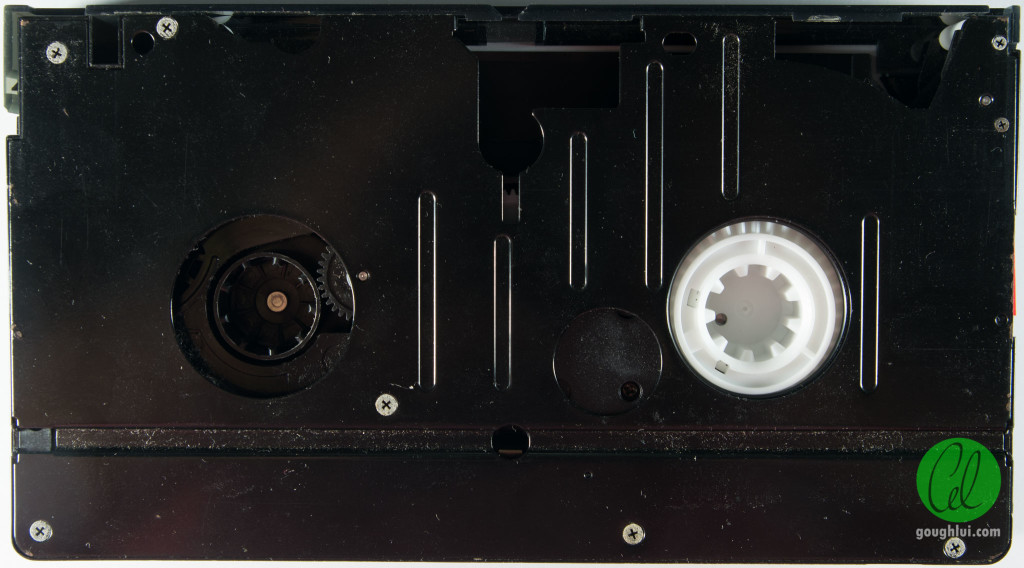
To maintain rigidity, the base plate is made out of metal. We can see the supply reel uses the original reel, but the take-up reel is connected via gearing to a plastic hub mounted inside the converter itself.
Lets just say, with modern flash-based video capture devices, things are a lot easier …

